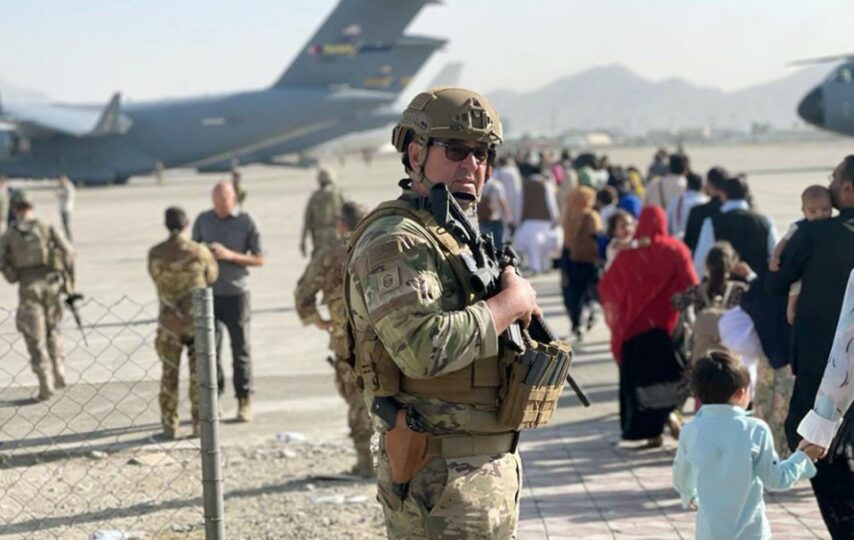On August 30, 2011, the United States Armed Forces ended their operations in Afghanistan, which marked an end to a war that lasted for two decades.
The United States, on October 7, 2001, during the George W. Bush administration, invaded the Central Asian country. The attacks were a response to the hijackings of four airplanes and suicide attacks against U.S. targets on September 11, 2001. Al Qaeda’s Islamic extremist group orchestrated the attacks.
The mission aimed to destroy al-Qaeda, which acted as the perpetrator of the September 11 attacks and prevent it from operating in Afghanistan while removing the Taliban government from power.
After completing each goal, the U.S. government was thought closer to leaving. However, the military decided to continue operations due to increased attacks, and time passed, making it the longest war in United States history.
As we mark a year of one of the biggest airlifts in history – a safe evacuation of more than 120,000, we look retrospectively at the result of the operation and its aftermath.
A Strain on America and Afghanistan
The events of 2011 led to the death of 2,443 American troops and 1,144 allied troops. Over 20,000 American troops were also injured. These numbers are small compared to the Afghan loss.
At least 66,000 Afghanistan troops died, over 48,000 civilians lost their lives, and 75,000 were injured. Reports say these numbers may be significantly underestimated.
The most significant loss in this war was the loss of lives, but it was not the only loss. The United States also invested over $2 trillion in this war. An amount that is almost 5 – 6 % of the country’s national debt, according to Middle East expert Amir Handjani, who was interviewed on this issue on CNBC.
These investments were intended to help the Afghan civilian government gain legitimacy and win the Afghan people’s trust.
Although there have been some improvements, particularly in the following areas: health care, maternal health, and education, the Afghanistan state is still considered weak.
Afghanistan Is Worse Off
The Taliban captured the capital of southern Nimruz Province on August 6, 2021. A rapid succession of provincial capitals followed. Everything the United States fought to prevent in Afghanistan for twenty years almost happened. The Taliban have overthrown the government and established Islamic rule.
Days before entering Afghanistan’s capital, Kabul, the Taliban took control of the city of Ghazni on August 12, 2021. Since then, the Taliban have imposed policies that violate women’s and girls’ rights, restricting freedom of movement, expression, and association and depriving many women and girls of earning income.
The Taliban barred women and girls from studying at secondary and higher levels, and curricula have been modified, making religious studies more prominent.
They prescribe what women wear, how they travel, workplace segregation by sex and even the type of cell phone women are allowed to own. Inspections and intimidation are two ways in which they enforce these rules.
In addition, since the Taliban took control, Afghans have lost millions of dollars in income. Due to former donor countries, including the United States, prices have spiked, aid has stopped, a liquidity crisis has occurred, and cash shortages have occurred.
What’s Next for the United States?
According to Lauren Miller of the Crisis Group, the United States must reform its policy entirely.
She says, “The humanitarian and economic crisis already emerging in Afghanistan shows that it will not be possible to stand with the Afghan people in any practical sense while isolating the regime governing them.”
So, the U.S. must determine how best to advance its interests in the region without letting losing the war cloud its judgment of how important it is to help millions of Afghans.
While Afghanistan is likely to become more impoverished under the Taliban, it would be much more humane to reduce international assistance to a much lower level instead of letting the economy and public services collapse.
By taking that approach, which involves relaxing sanctions and easing the complete withdrawal of development aid, the United States would also acknowledge its role in Afghanistan’s dependence on support over the past twenty years.
Wrapping Up
As Afghanistan’s economic and humanitarian situation worsens in the days and weeks ahead, it will be necessary to make politically difficult decisions.
It will be essential to engage in robust diplomacy to align Afghan neighbors and allies with U.S. policy.
Now is the time for Congress to show pragmatism and agility in dealing with Afghanistan’s new rulers.
The United States may have to work directly with the Taliban in some spheres to prevent a humanitarian catastrophe.













